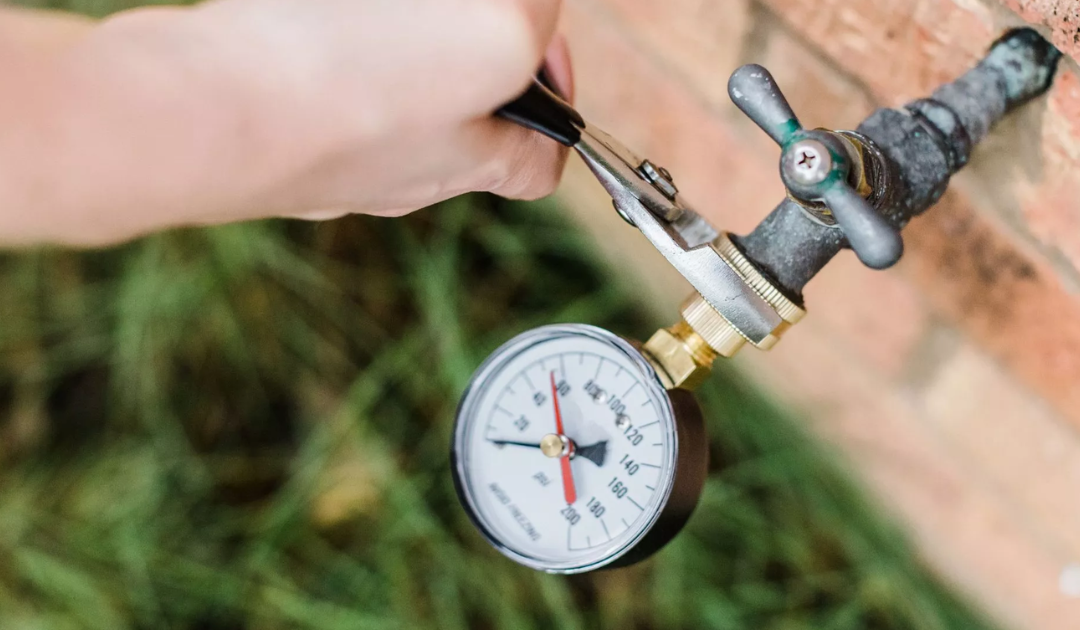Water pressure is a critical factor in maintaining the functionality of our everyday tasks. A steady and robust water flow ensures seamless activities such as bathing, dishwashing, and laundry. Unfortunately, the frustration of encountering low water pressure is a common woe for many homeowners. In this comprehensive guide, we will delve into the intricacies of low water pressure, exploring the various causes behind this issue and providing practical fixes to restore optimal water flow.
Understanding Water Pressure:
To comprehend the challenges posed by low water pressure, it is essential to grasp the basics. Water pressure is the force propelling water through pipes and fixtures, determining the speed and strength of its flow.
The standard range for normal water pressure typically falls between 40 to 80 psi (pounds per square inch).
Common Causes of Low Water Pressure:
Pipe Corrosion:
Old or corroded pipes can obstruct water flow, leading to a gradual reduction in pressure over time. Inspecting and replacing these aging pipes can significantly improve water pressure.
Mineral Buildup:
The accumulation of minerals such as calcium and magnesium in pipes can restrict water flow, causing a noticeable decrease in pressure. Regular maintenance, including descaling pipes, can mitigate this issue.
Water Leaks:
Undetected leaks in the plumbing system divert water away before it reaches faucets and fixtures, resulting in decreased pressure. Conduct routine leak inspections and promptly address any issues to maintain optimal water pressure.
Municipal Supply Issues:
At times, low water pressure may not originate within your home but rather from the municipal water supply. Contacting your local water provider can help identify and resolve these external factors affecting pressure.
Water Valve Issues:
Faulty or partially closed water valves can limit the amount of water entering your home, leading to low pressure. Regularly inspect and ensure that all water valves, including the main shut-off valve, are fully open.
Diagnosing the Problem:
To address low water pressure effectively, a systematic approach to diagnosing the issue is necessary. Begin by checking for visible leaks, inspecting the condition of pipes, and testing water pressure at various fixtures throughout your home.
DIY Fixes:
Clean Faucet Aerators:
Sediment and debris can accumulate in faucet aerators, resulting in reduced water flow. Regularly clean or replace these aerators to maintain optimal pressure.
Check for Leaks:
Conduct a thorough inspection for leaks by examining visible pipes and fixtures. Fixing leaks promptly can significantly improve water pressure.
Inspect Water Valves:
Ensure that all water valves, including the main shut-off valve, are fully open. Partially closed valves can restrict water flow, contributing to low pressure.
Pressure-Reducing Valve Adjustment:
If your home is equipped with a pressure-reducing valve, consider adjusting it to achieve the desired water pressure. Consult the valve’s manual for proper adjustment procedures.
Professional Solutions:
For more complex issues that may be challenging to identify or fix independently, seeking professional plumbing assistance is advisable. Plumbers can conduct advanced diagnostics, such as pressure tests and pipe inspections, to pinpoint and address underlying problems effectively.
Upgrading Plumbing Systems:
Consider upgrading your plumbing system, especially if you have older or corroded pipes. Modern materials and techniques, such as PEX piping, can enhance water flow and pressure, providing a long-term solution to low water pressure issues.
FAQs:
Q1: Can low water pressure be a sign of a serious problem?
A1: Yes, while it can result from minor issues like clogged aerators, low water pressure can also indicate more severe problems like leaks or pipe corrosion. Prompt attention is crucial.
Q2: Is it normal for water pressure to vary throughout the day?
A2: Slight variations are common, but drastic changes may signify underlying issues that require attention. Consistent pressure is ideal for efficient water usage.
Q3: How can I measure my water pressure?
A3: Use a water pressure gauge, readily available at hardware stores, to measure the pressure at different faucets. This can help in identifying potential issues.
Q4: Can a water pressure booster help?
A4: Yes, a booster pump can increase water pressure, but it’s essential to address the underlying cause for a long-term solution. Boosters are a temporary fix.
Q5: Are there preventive measures to avoid low water pressure?
A5: Regular maintenance, leak checks, and prompt repairs can prevent many issues leading to low water pressure. Proactive measures contribute to sustained water flow.
Q6: What’s the role of the water pressure regulator?
A6: A regulator maintains consistent water pressure by controlling the flow entering your home. A malfunctioning regulator can cause pressure issues, necessitating repair or replacement.
Q7: Should I attempt to fix low water pressure issues myself?
A7: Simple issues like cleaning aerators can be addressed through DIY methods. However, for complex problems, it’s advisable to consult a professional plumber to ensure effective and lasting solutions.
Conclusion:
Low water pressure can be a persistent and frustrating issue, affecting various aspects of daily life. Armed with a thorough understanding of the causes and practical solutions outlined in this guide, homeowners can take proactive steps to address low water pressure effectively. Whether it involves a simple DIY fix or a more intricate plumbing overhaul, the goal is to create a more comfortable and functional living space with a steady and efficient water supply. Regular maintenance and timely repairs will contribute to sustained water pressure, ensuring a seamless flow for all household activities.

A group of home improvement enthusiasts and bathroom design experts, combines in-depth knowledge and a shared passion to deliver engaging, informative content that guides readers through the world of bathroom innovation and style.

Leave a Reply